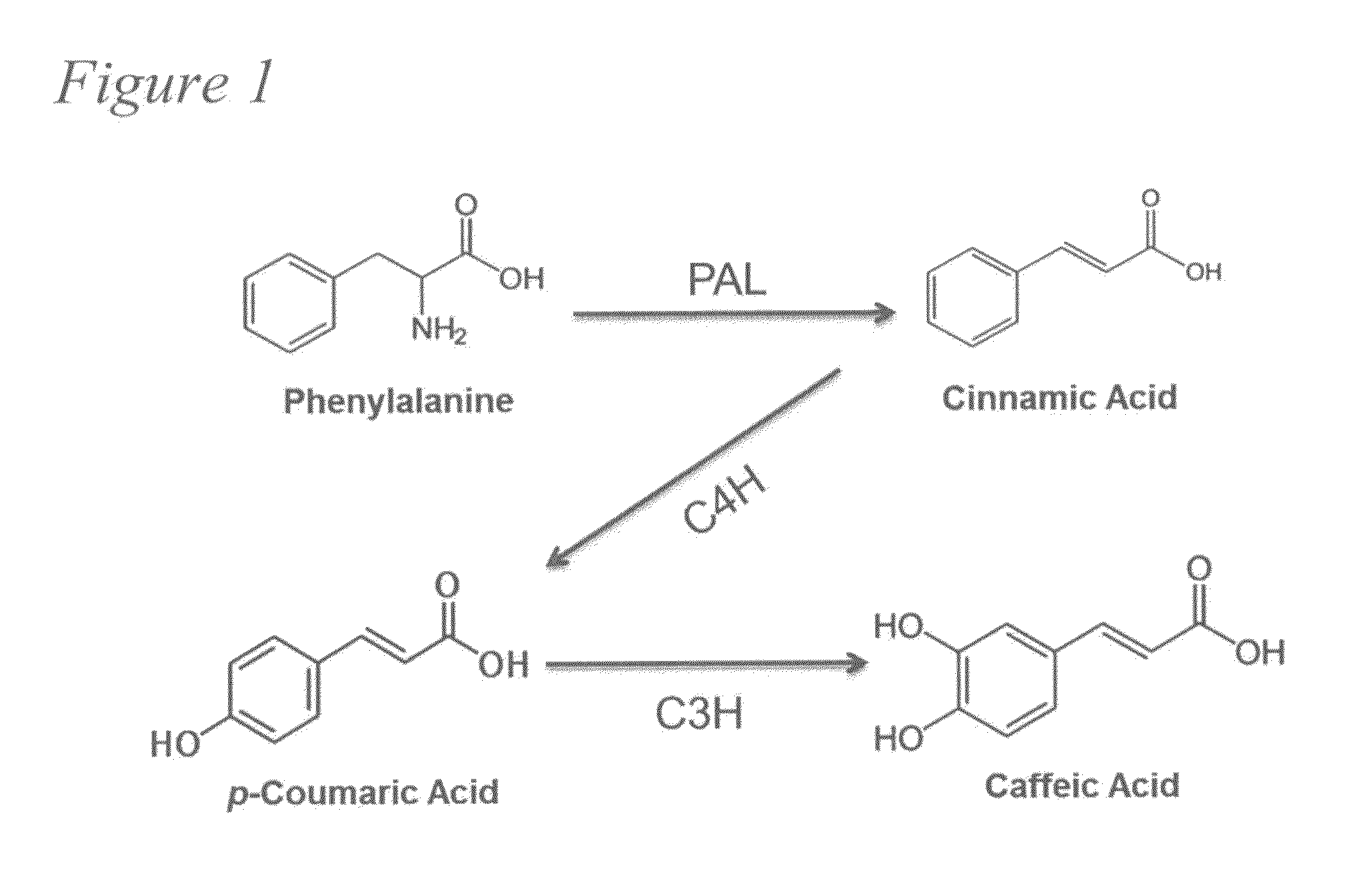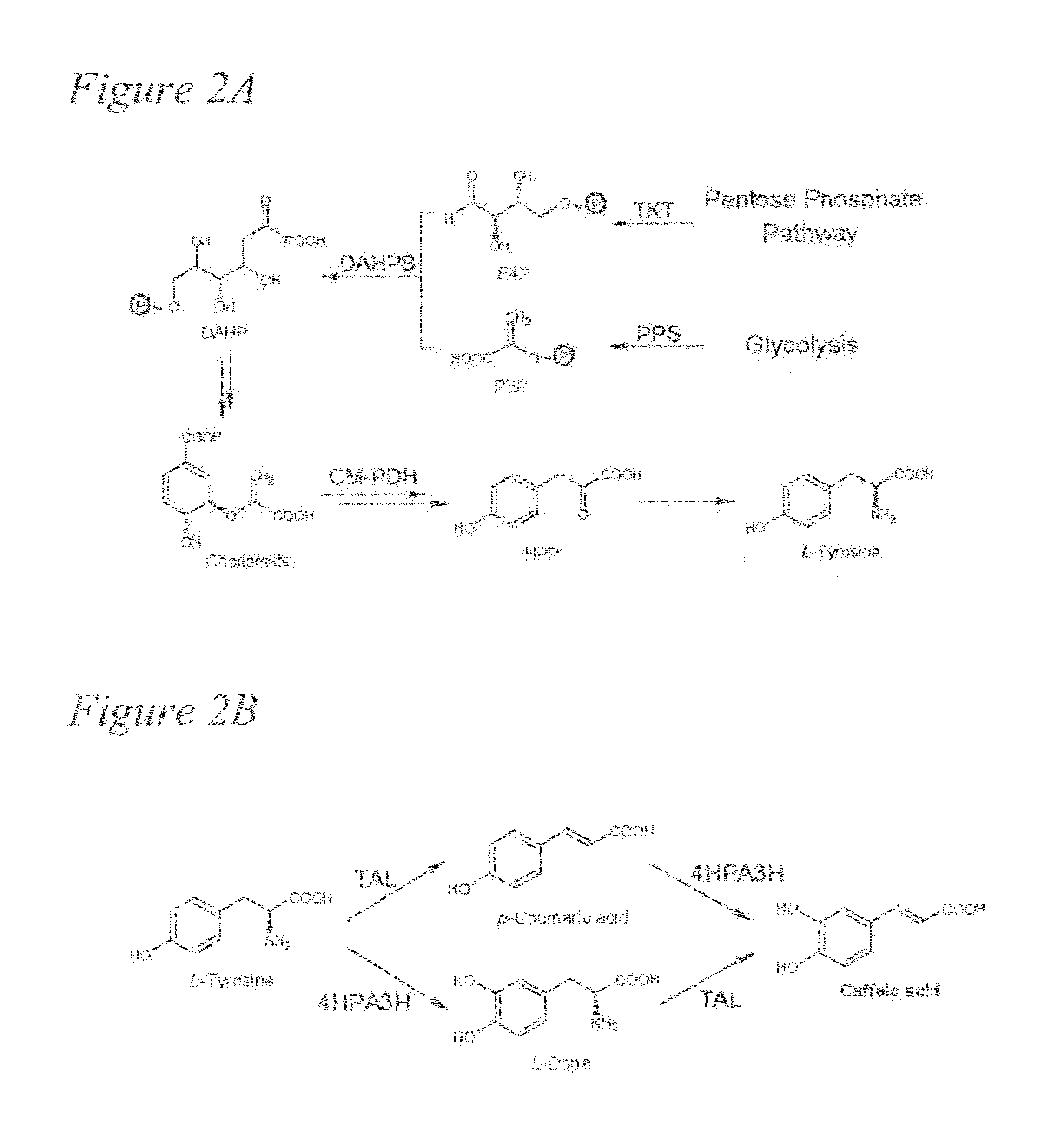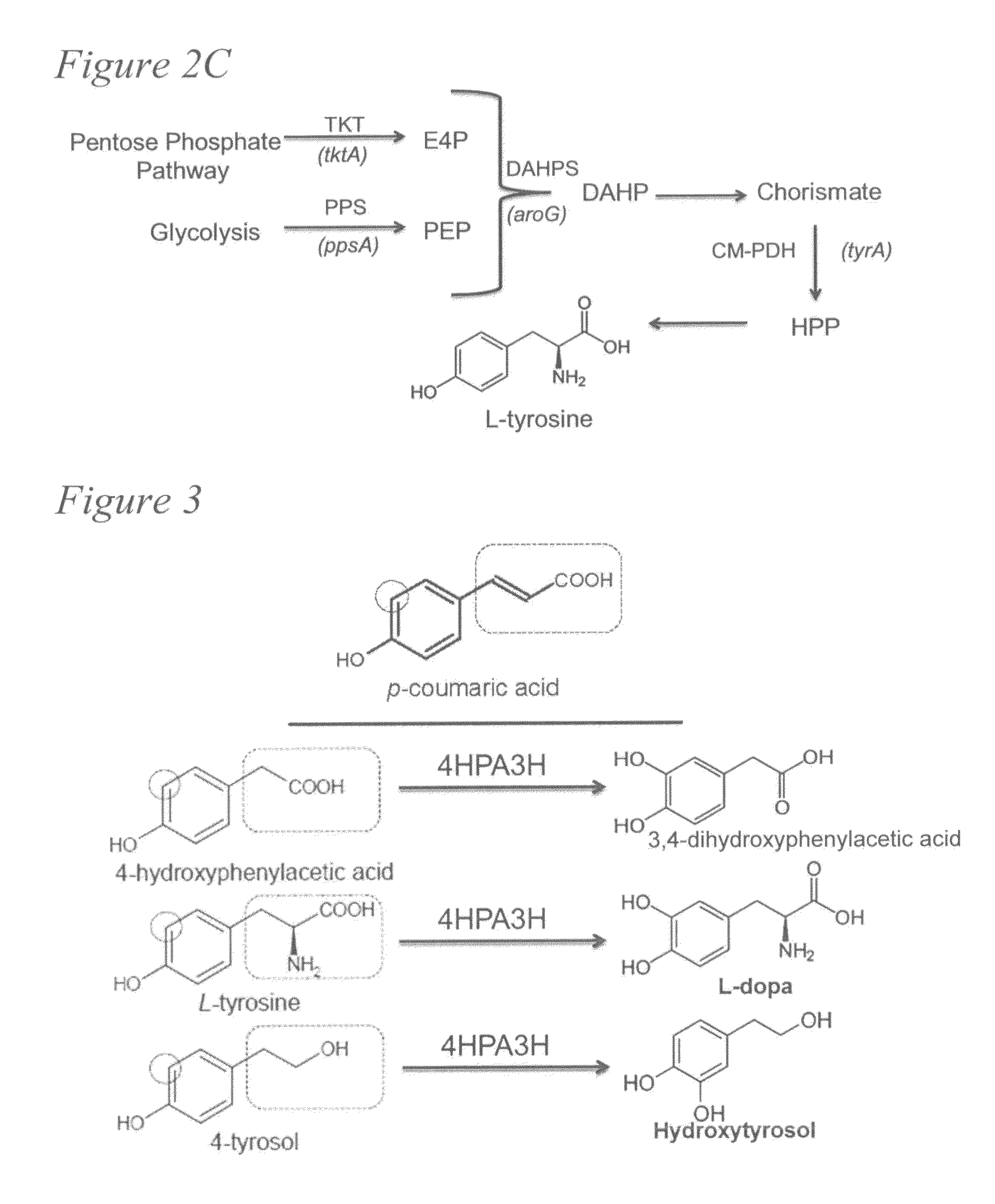Biosynthesis of caffeic acid and caffeic acid derivatives by recombinant microorganisms
a technology of recombinant microorganisms and biosynthesis, which is applied in the direction of lyases, carbon-nitrogen lyases, enzymology, etc., can solve the problems of increasing production costs, difficult and expensive isolation of these compounds, and inability to be preferred for large-scale production
- Summary
- Abstract
- Description
- Claims
- Application Information
AI Technical Summary
Benefits of technology
Problems solved by technology
Method used
Image
Examples
example 1
Biosynthesis of Caffeic Acid in Escherichia coli Using its Endogenous Hydroxylase Complex
[0080]Caffeic acid (3,4-dihydroxycinnamic acid) is a natural phenolic compound derived from the plant phenylpropanoid pathway. Caffeic acid and its phenethyl ester (CAPE) have attracted increasing attention for their various pharmaceutical properties and health-promoting effects. Nowadays, large-scale production of drugs or drug precursors via microbial approaches provides a promising alternative to chemical synthesis and extraction from plant sources. The development of processes that can enable the biosynthesis of these high-value metabolites from simple carbon sources is especially desirable.
[0081]We first identified that an Escherichia coli native hydroxylase complex previously characterized as the 4-hydroxyphenylacetate 3-hydroxylase (4HPA3H) was able to convert p-coumaric acid to caffeic acid efficiently. This critical enzymatic step, catalyzed in plants by a membrane-associated cytochrome...
PUM
| Property | Measurement | Unit |
|---|---|---|
| concentration | aaaaa | aaaaa |
| concentration | aaaaa | aaaaa |
| concentration | aaaaa | aaaaa |
Abstract
Description
Claims
Application Information
 Login to View More
Login to View More - R&D
- Intellectual Property
- Life Sciences
- Materials
- Tech Scout
- Unparalleled Data Quality
- Higher Quality Content
- 60% Fewer Hallucinations
Browse by: Latest US Patents, China's latest patents, Technical Efficacy Thesaurus, Application Domain, Technology Topic, Popular Technical Reports.
© 2025 PatSnap. All rights reserved.Legal|Privacy policy|Modern Slavery Act Transparency Statement|Sitemap|About US| Contact US: help@patsnap.com



